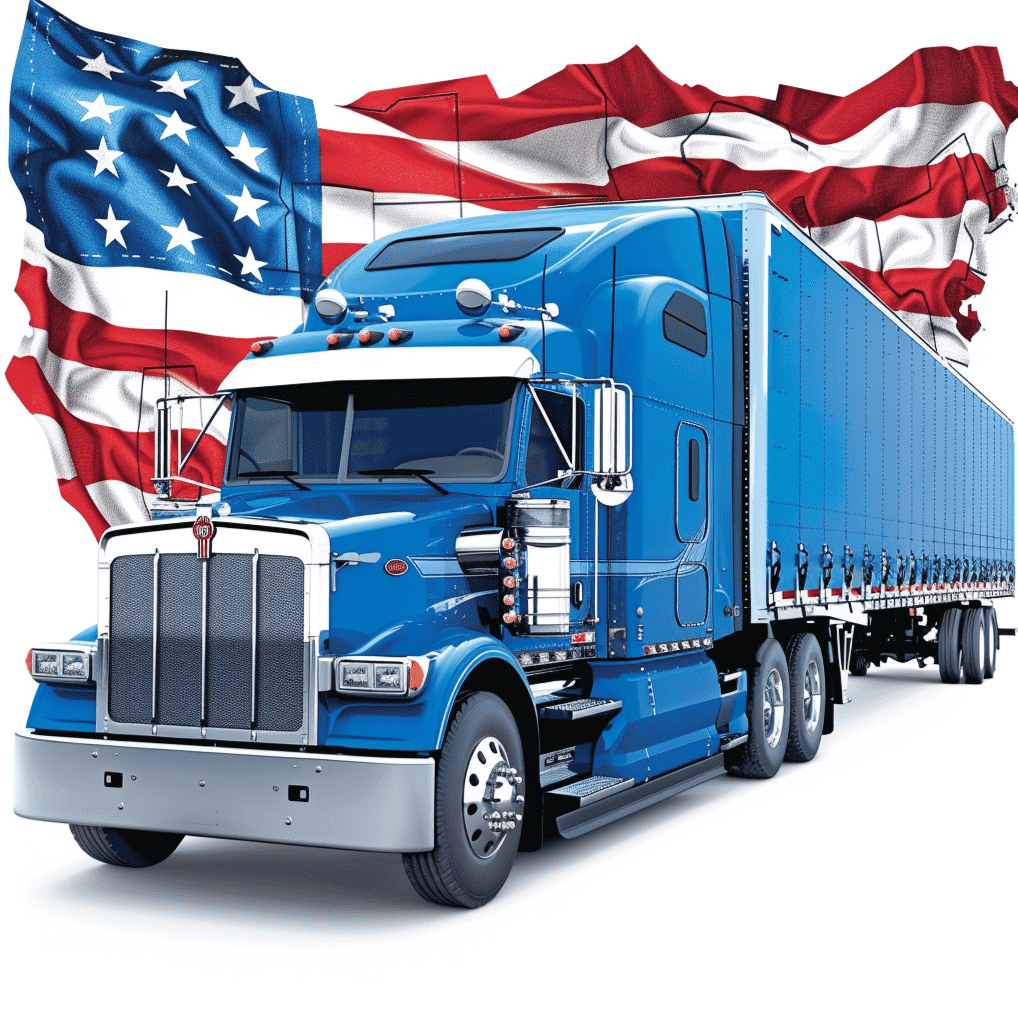New Jersey Truck Restricted Routes
Freedom Heavy Haul can offer expedited Pickup and Delivery for any size shipment anywhere in the USA. Contact us today for No Hassle, No Pressure Pricing.
The transportation landscape in New Jersey presents unique challenges and opportunities for commercial trucking. With its dense population, strategic location in the Northeastern corridor, and bustling ports, ensuring the safe and efficient movement of goods is critical. New Jersey has implemented comprehensive truck routing regulations to balance the needs of commercial transportation with those of public safety and infrastructure preservation. Learn more about overweight vehicle requirements in New Jersey to ensure compliance with these regulations.
Overview of New Jersey Truck Restricted Routes
Understanding the regulatory framework governing truck movements is essential for commercial operators in New Jersey. The state’s truck routing regulations are designed to harmonize with federal guidelines while addressing local concerns.
Introduction to N.J.A.C. 16:32
The New Jersey Administrative Code (N.J.A.C. 16:32) outlines the rules for truck operations across the state. It specifies permitted routes, width and length restrictions, and access to terminals and other facilities. This code forms the backbone of the state’s efforts to regulate truck traffic, ensuring that vehicles are routed in a manner that minimizes impact on local communities and preserves the condition of road infrastructure.
Federal Compliance and State Objectives
The regulations are crafted in compliance with the Federal Highway Administration’s guidelines on truck size and weight. They also take into account the reasonable access provisions for commercial motor vehicles authorized by the federal Surface Transportation Assistance Act of 1982. New Jersey’s approach aims to fulfill federal requirements while addressing state-specific concerns such as road safety, infrastructure longevity, and the reduction of traffic congestion.

Role of the New Jersey Department of Transportation
The New Jersey Department of Transportation (NJDOT) plays a pivotal role in the implementation and enforcement of truck routing regulations. Through collaboration with various stakeholders, including local municipalities, transportation agencies, and the commercial trucking industry, NJDOT ensures that the routing regulations serve the interests of all parties involved while prioritizing public safety and infrastructure integrity.
Classification of Road Networks
New Jersey’s road network is classified into several categories to facilitate truck routing and ensure that trucks travel on roads that can safely accommodate them.
The National Network for Trucks
The National Network comprises primarily Interstate highways, the Atlantic City Expressway, the New Jersey Turnpike, and parts of other roads. This network is designed to bear the bulk of heavy truck traffic, offering routes that support the efficient transport of goods across state lines and within New Jersey.
New Jersey Access Network Specifications
In addition to the National Network, the New Jersey Access Network includes state highways and selected county roadways. This network provides essential connectivity for trucks traveling to destinations not directly accessible from the National Network, such as local distribution centers and industrial facilities.
Local Unrestricted Roadways and Usage
Local unrestricted roadways are available for truck use under specific conditions, such as reaching a terminal or obtaining services like fuel and repairs. These roads are intended to be used sparingly by trucks, primarily for the “last mile” of delivery or when direct access from the National or Access Networks is not possible.
Specific Route Requirements
New Jersey’s truck routing regulations stipulate specific requirements to manage truck movements effectively across the state. Trucks are generally required to use the National Network for their primary routes, and deviations are permitted only under strict conditions. Ensure your routes align with the overweight vehicle regulations in New Jersey.
Utilization of the National Network
This directive aims to concentrate heavy truck traffic on roads designed to handle such loads, thereby reducing wear and tear on local roadways and mitigating safety risks in residential areas.

Conditions for Deviating from Designated Routes
There are conditions under which trucks may deviate from designated routes, including for the direct access to terminals, services, or in response to road closures and emergencies. Such deviations are carefully regulated to ensure that they do not compromise road safety or lead to undue deterioration of infrastructure.
Re-entry Protocols to the National Network
After completing their business off the National Network, trucks are required to return to it in a manner that aligns with reaching their next destination efficiently. This protocol ensures that trucks spend the minimal necessary time on local roadways, reducing their impact on smaller roads and communities.
Legal and Regulatory Framework
The legal and regulatory landscape surrounding truck routing in New Jersey is shaped by both historical precedents and ongoing developments. Recent amendments to the regulations often focus on safety and efficiency. For updates on these changes, refer to New Jersey’s overweight vehicle policies.
Evolution of Truck Routing Regulations
New Jersey’s truck routing regulations have evolved over the years in response to legal challenges, technological advancements, and changes in commerce patterns. This evolution reflects the state’s commitment to adapting its policies to meet the changing needs of its residents and the trucking industry.
Impact of Federal and State Laws on Truck Routing
Federal and state laws significantly impact truck routing regulations. New Jersey’s regulations are designed to be in compliance with federal laws while also taking into consideration state-specific concerns such as environmental protection, road safety, and local economic development.
Recent Amendments and Their Implications
The truck routing regulations have been amended periodically to reflect new insights, technologies, and logistical practices. Recent amendments focus on increasing efficiency, safety, and environmental protection. These changes often come after extensive consultations with stakeholders, ensuring that the regulations not only comply with national standards but also cater to the specific needs and concerns of New Jersey’s diverse communities.
Safety and Enforcement
Safety is a paramount concern in the regulation of truck traffic, with enforcement mechanisms in place to ensure compliance with established routes and standards. To maintain compliance and reduce risks, truck operators should review the overweight vehicle requirements in New Jersey.

Truck Safety Initiatives and Programs
New Jersey has implemented various safety initiatives and programs aimed at reducing accidents and enhancing road safety. These include stringent vehicle inspection requirements, driver training programs, and the deployment of advanced technologies to monitor compliance with traffic laws and regulations.
Monitoring and Enforcement of Truck Routes
Monitoring and enforcement are crucial to the effectiveness of truck routing regulations. NJDOT, in collaboration with local law enforcement and the New Jersey State Police, employs a range of strategies, from traditional patrols to sophisticated electronic surveillance, to ensure trucks adhere to designated routes and regulations.
Collaboration with New Jersey State Police
The partnership between NJDOT and the New Jersey State Police is a cornerstone of the state’s approach to enforcing truck routing regulations. This collaboration ensures that enforcement is consistent, fair, and effective, with both entities sharing information and resources to achieve common objectives.
Resource and Information Access
Access to accurate and current information is essential for truck operators to comply with routing regulations. NJDOT offers resources such as truck routing maps and consultation services. For detailed information on securing permits and meeting compliance standards, explore guidelines for overweight vehicles in New Jersey.
Availability of Truck Routing Maps
New Jersey provides detailed truck routing maps and guides, accessible online and in print. These resources are invaluable for planning routes that comply with state regulations, helping to avoid unnecessary delays and penalties.
NJDOT’s Consultation and Feedback Mechanisms
NJDOT maintains open channels for consultation and feedback, allowing truck operators, business owners, and the general public to share their experiences and concerns. This feedback is crucial for refining routing regulations and ensuring they meet the needs of all stakeholders.
Public and Stakeholder Engagement
Engaging with the public and stakeholders is a key strategy for NJDOT to ensure that truck routing regulations are understood and supported by the community. Through public meetings, workshops, and online platforms, NJDOT fosters a dialogue that helps to build consensus and compliance.
Future Directions and Improvements
As the logistics and transportation landscape evolves, so too will the regulations governing truck routing in New Jersey.
Technological Innovations in Truck Routing
Emerging technologies, such as GPS tracking and autonomous vehicles, offer new opportunities to enhance route planning and compliance monitoring. For operators preparing for future infrastructure upgrades, understanding New Jersey’s overweight vehicle requirements can ensure continued compliance.
Planned Infrastructure Upgrades and Their Impact
Ongoing and future infrastructure upgrades are expected to significantly impact truck routing regulations. Enhancements to roadways, bridges, and tunnels will facilitate smoother traffic flow and allow for the revision of existing route designations to reflect these improvements.
Policy Changes and Strategic Planning
Anticipating future trends and challenges, New Jersey is committed to continuously updating its truck routing policies and strategic plans. This proactive approach ensures that the state’s transportation infrastructure remains robust, adaptable, and aligned with broader economic and environmental goals. By maintaining a dynamic and responsive regulatory framework, New Jersey aims to support the vital role of trucking in the state’s economy while safeguarding the interests of its communities and natural environment.







